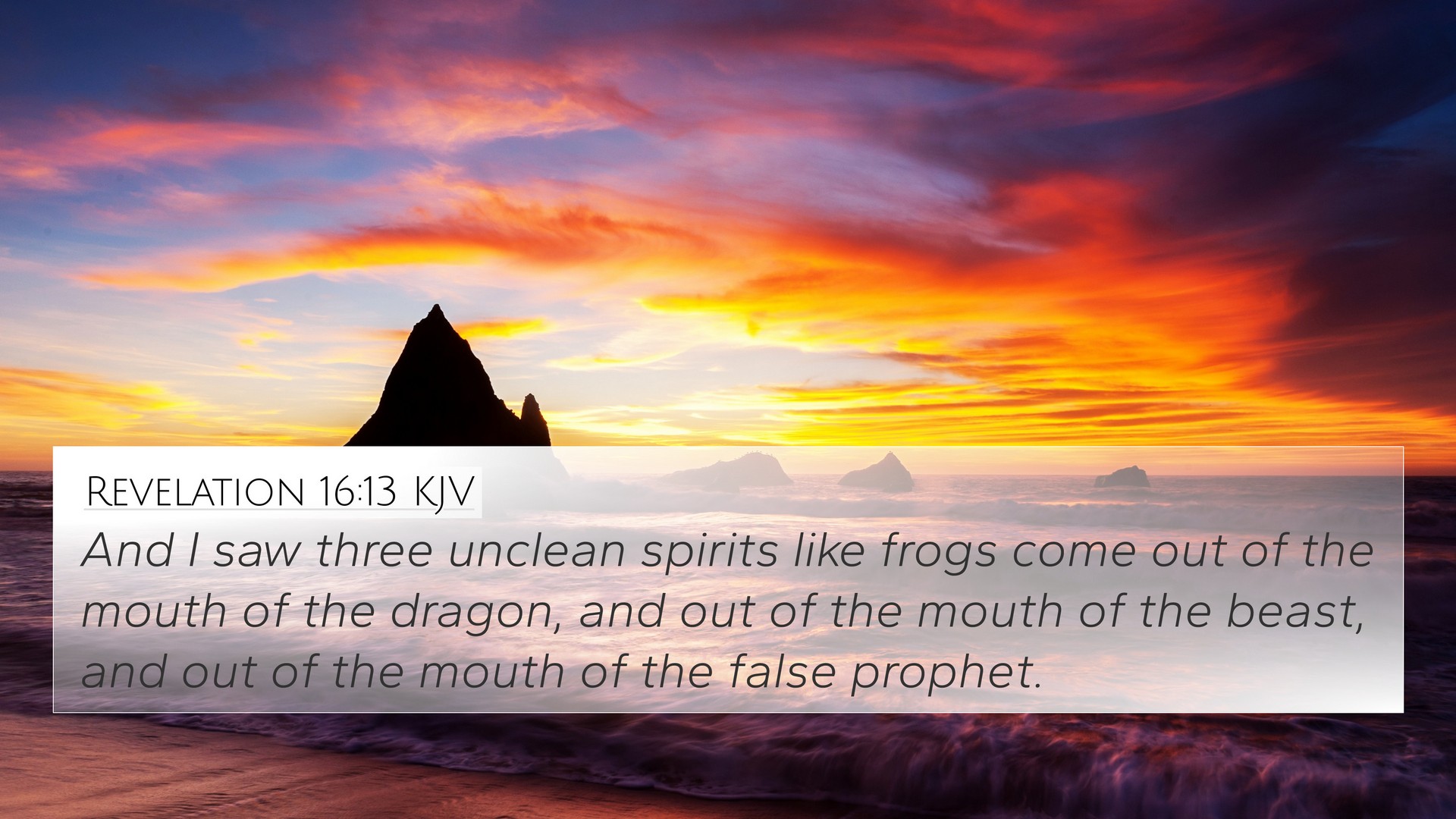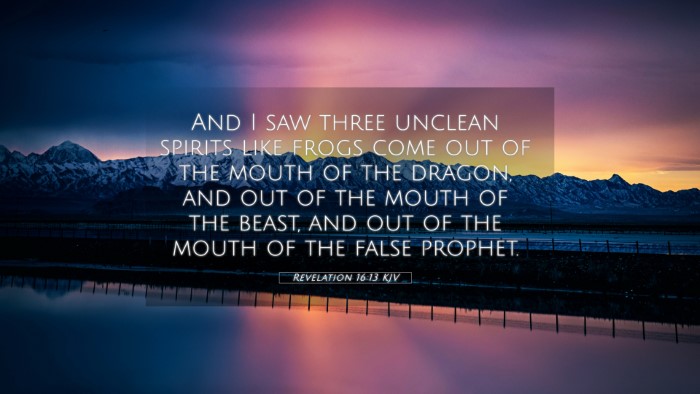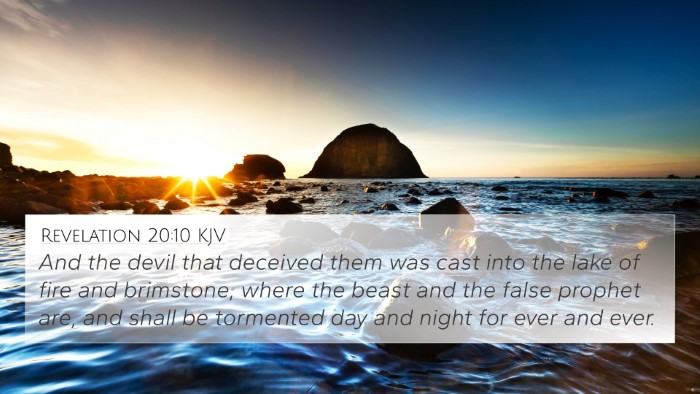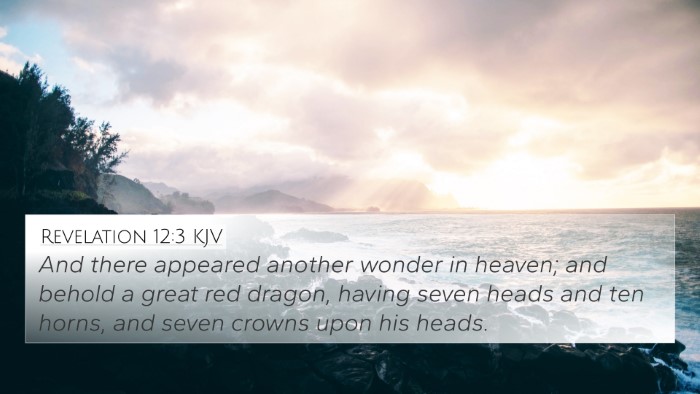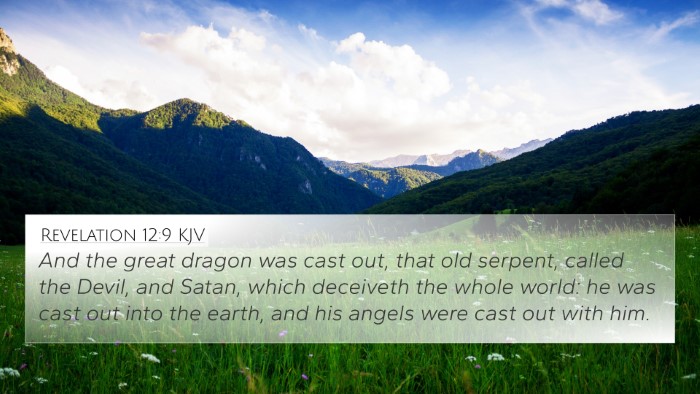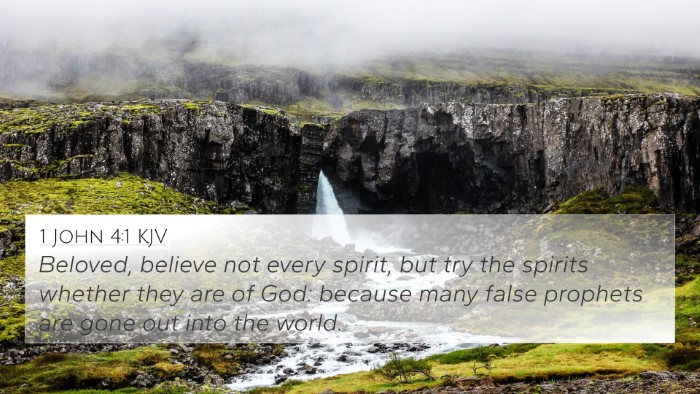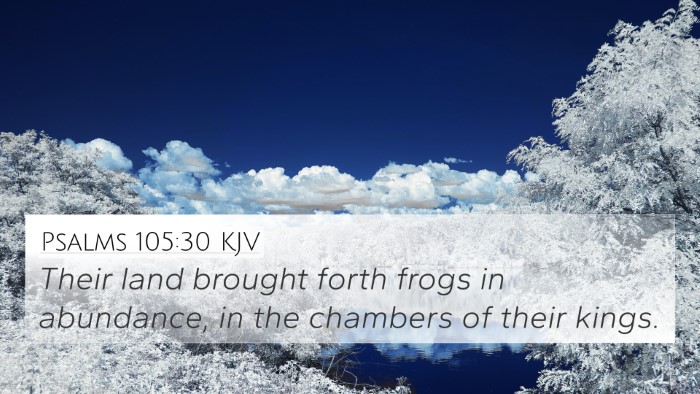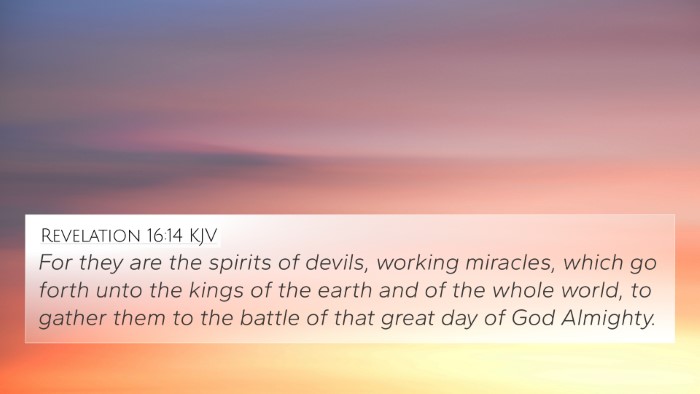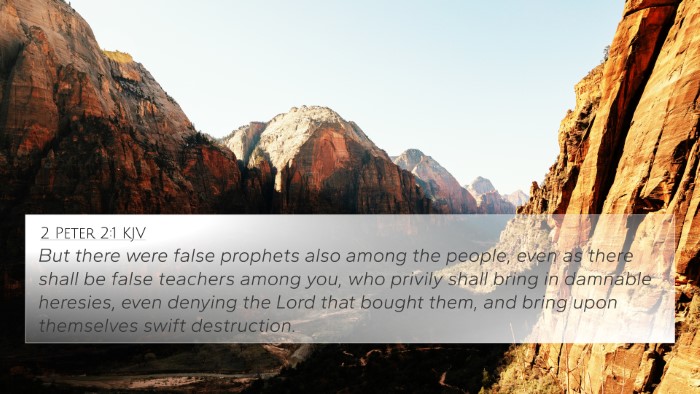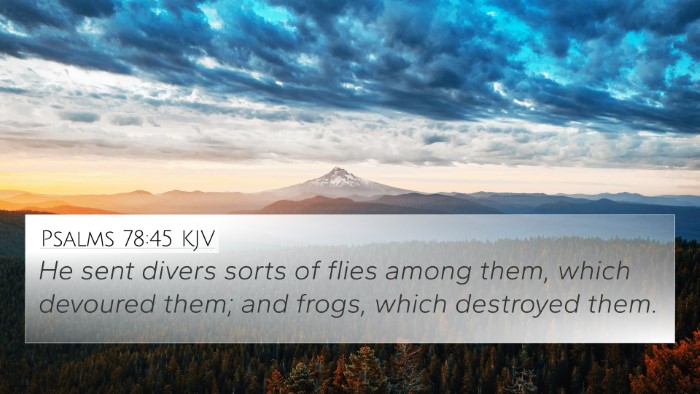Understanding Revelation 16:13
Revelation 16:13 states: "And I saw three unclean spirits like frogs come out of the mouth of the dragon, and out of the mouth of the beast, and out of the mouth of the false prophet." This verse presents vivid imagery indicative of spiritual deception and the end times.
Verse Meaning and Interpretation
The presence of three entities—the dragon, the beast, and the false prophet—symbolizes a unison of powerful evil influences working against God's people. The metaphor of frogs, often associated with uncleanness in biblical texts, signifies the repulsive and destructive nature of these spirits. Here we explore insights from renowned public domain commentaries.
Insights from Matthew Henry's Commentary
Matthew Henry emphasizes the representation of the dragon, beast, and false prophet as a powerful triad of evil. The dragon symbolizes Satan, the beast the political powers opposing God, and the false prophet represents false religions that lead people away from the truth. Henry points out that their unclean spirits mirror the deceptive nature of sin and rebellion against God.
Albert Barnes' Perspective
Albert Barnes highlights the significance of the "unclean spirits" as agents of spiritual warfare. He notes that these spirits emerge from the mouths of the dragon, beast, and false prophet, suggesting that their lies are articulate and persuasive, designed to lead humanity astray. Barnes draws parallels between this verse and the broader theme of spiritual deception found throughout Scripture.
Adam Clarke's Interpretation
According to Adam Clarke, the imagery of frogs indicates a pervasive influence that can invade and corrupt. Clarke suggests that the specificity of the number three could correspond to the unholy trinity opposing God's divine nature. He underscores the alertness Christians must maintain to resist these unclean influences.
Cross-Referencing Biblical Texts
This verse is deeply interconnected with several other biblical passages, enhancing the understanding of its themes. Below are prominent cross-references:
- Revelation 13:1-2 - Details the rise of the beast and further supports the imagery present in Revelation 16.
- Revelation 19:20 - Discusses the fate of the beast and the false prophet, reinforcing their evil roles.
- Matthew 7:15 - Jesus warns against false prophets, aligning with the message conveyed in Revelation.
- 1 John 4:1 - Encourages testing the spirits to discern truth from falsehood in the context of prophecy.
- Exodus 8:3 - References frogs as a plague, drawing a parallel to their image as agents of evil in Revelation.
- 2 Thessalonians 2:9-12 - Describes deception and signs of falsehood that will mislead those not anchored in faith.
- Isaiah 19:14 - Indicates that God can send a spirit of confusion, tying the unclean spirits' role in leading to demonic influence.
Thematic Connections
The verse not only stands alone but also contributes to various themes in Scripture:
- Spiritual Warfare: The entities in Revelation 16:13 are engaged in a cosmic battle against God’s authority.
- Deception: The nature of the spirits reveals the lengths to which evil will go to deceive believers.
- Judgment: The coming forth of these spirits signals impending judgment upon the earth.
Tools for Bible Cross-Referencing
Understanding Revelation 16:13 in context benefits from using various tools for Bible cross-referencing. Here are some resources:
- Bible Concordance
- Bible Cross-Reference Guide
- Online Bible Study Tools and Apps
- Commentary Collections
- Cross-Reference Bible Study Methods
Conclusion
In summary, Revelation 16:13 serves as a powerful reminder of the spiritual battles waged against truth and faith. By employing cross-referencing, readers can gain deeper insights into the implications of this verse and its connections to broader biblical themes. Understanding such verses can enrich personal study and sermon preparation, as well as enhance one’s spiritual discernment.
Additional Study Recommendations
To gain a fuller understanding of the implications of Revelation 16:13, consider exploring the following:
- How to find cross-references in the Bible
- Identifying connections between Old and New Testament
- Links between the Prophets and Apostolic teachings
- Cross-referenced themes in the Bible
